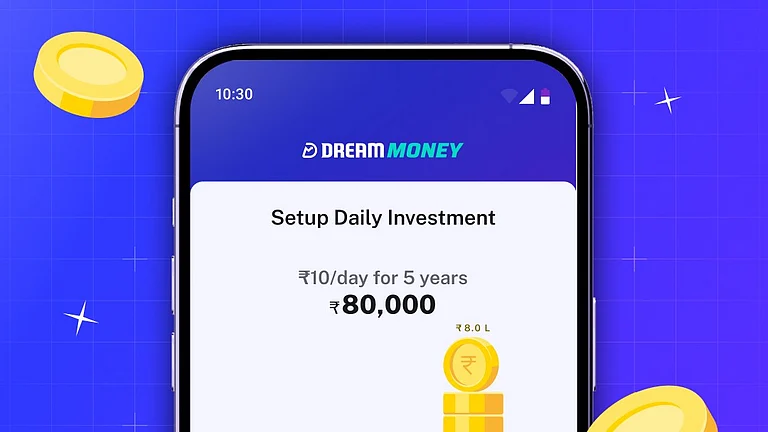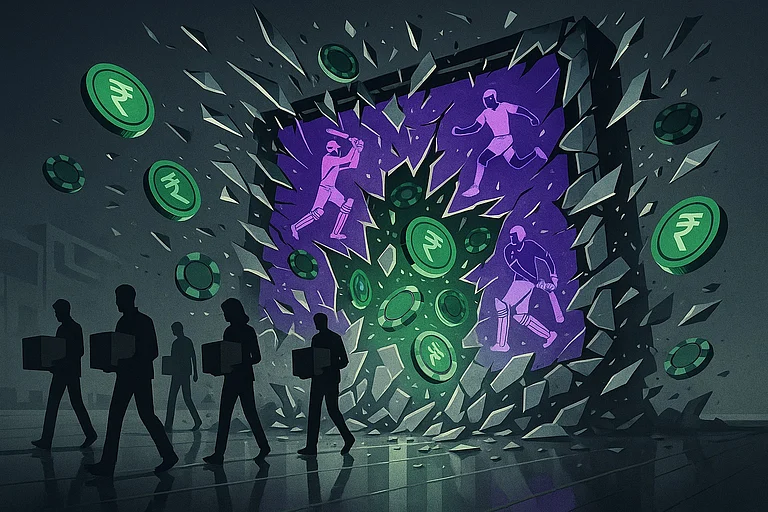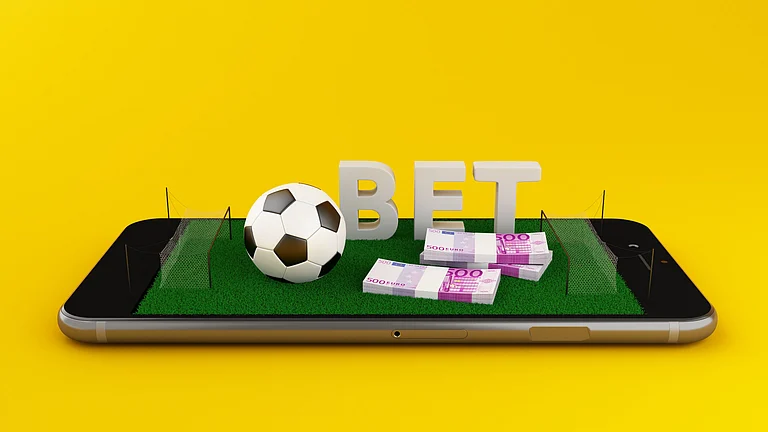The government’s ban on real money gaming threatens IPL advertising
Fantasy platforms like Dream11 and MPL had become central to the IPL
The league has faced similar shocks before — from Byju’s collapse to curbs on crypto sponsors
IPL’s Ad Pitch Turns Uncertain as Real Money Gaming Faces the Axe
The Indian Premier League has long been fuelled as much by glitzy ads as by sixes and wickets. But with the government banning real money gaming, one of its biggest cash cows has just been yanked off the pitch
A regular Indian Premier League (IPL) fan would often see advertisements featuring actor Ajay Devgan promoting Rummy, or cricketers such as KL Rahul and Shikhar Dhawan endorsing team spirit for Dream11. There is no accident these ads appear so frequently.
Real money gaming apps such as Dream11 and MPL (Mobile Premier League) have become major revenue drivers for the IPL. Industry experts point out that in 2025, fantasy sports and RMG platforms were projected to spend nearly ₹3,000 crores on advertising.
However, things have changed a lot in the gaming industry in the last few hours after the government enacted a law to ban real money games.
“This applies to games of chance, games of skill, and those that combine both. Advertising and promotion of such games is strictly prohibited,” the law says.
“If these players are forced out, the overall hit could be in the range of ₹3,500–4,500 crore across TV and digital,” says Yasin Hamidani, Director, Media Care Brand Solutions. This would be equivalent to roughly 35–40% of the IPL’s total ad revenue.
When Vivo exited in 2020, Dream11 stepped in to acquire title partnership rights for IPL 2020.
That time, Harsh Jain, CEO & Co-Founder, Dream Sports (Dream11) said in a statement that the launch of IPL in 2008 gave birth to the idea of Dream11.
In March 2024, My11Circle replaced Dream11 as the official IPL partner after winning a five-year deal.
Over time, IPL and fantasy gaming became inseparable. The numbers back this trend. During IPL 2023, around 61 million users took part in fantasy gaming, according to Redseer Strategy Consultants.
A Cycle of Uncertainty
As uncertainty clouds real money gaming and its links with the IPL, it’s worth remembering this isn’t the league’s first brush with turbulence. Past corporate crises have repeatedly spilled over into cricket’s biggest spectacle. The league has faced other googlies too: In 2021, the BCCI told all team owners, as well as media rights holder Star and Disney India, not to sign any sponsorship deals with cryptocurrency exchanges, due to the government’s stand on the crypto sector.
Take the case of Byju’s, once among the most popular edtech platforms and valued at $22 billion in 2022. The company was a key contributor to the IPL, dominating ad slots and even serving as the official jersey sponsor.
In fact, edtech as a sector accounted for over 40 hours of ad time for IPL across channels during 2022. But after Byju’s downfall, the picture changed. The company also faced a BCCI case over unpaid sponsorship dues of ₹158 crore.
The funding winter of 2023 deepened the troubles. Venture funding into Indian startups fell from $35.5 billion in 2021 to $23.9 billion in 2022, as per data from Venture Intelligence. This in turn, made start-ups cautious about investing in IPL. As a result, the participation of start-ups decreased from 29 in 2022 to 19.
Speaking about the situation, Ambika Sharma, Founder and Chief Strategist, Pulp Strategy, says, “In the past we have seen gaps when brands like Byju’s pulled out, but those were episodic and quickly covered by categories like fintech or e-commerce. A structural ban on an entire category is different. Broadcasters and digital platforms will face pressure to recalibrate ad rates, and replacement categories will need aggressive incentives.”
Historically, new industries have stepped in like real estate, food delivery, crypto, fantasy gaming. Experts believe another category will eventually replace them.
“It’s part of the same cycle. Unlike global IPs like FIFA where sponsors stay for decades, in India every cycle demands new sponsors because ROI beyond eyeballs isn’t clear. No brand has stuck with BCCI for 10+ years. Each cycle ends when ROI doesn’t justify the spend. So while this isn’t unusual, the suddenness does create panic,” says Nimish Raut, Global Head Esports: Partnerships & Special Projects, NODWIN Gaming.
Meanwhile advertisers are sure that the absence of RMG ads would reshape the IPL marketplace. It will free up prime ad slots, giving other sectors a chance to step in. However, in the short term, this also means rights holders and broadcasters may earn less, though some of the gap could be filled by fintech, e-commerce, and consumer tech brands.
The government said the ban was aimed at curbing addiction, financial ruin and social distress caused by predatory gaming platforms that thrive on misleading promises of quick wealth. In an interaction with the Economic Times, union electronics and information technology minister Ashwini Vaishnaw said that online money gaming has affected the youth, the middle class and rural families.
He further added that these games have been linked to addiction and, in some cases, have even driven young people to suicide.
“Feedback was consistently coming from every part of the country, whether Congress or NDA-ruled states, that this is harmful for society, and that action needs to be taken,” he added.
For the IPL, the exit of real money gaming ads may sting in the short term. But India’s most-watched spectacle has always found fresh patrons, from edtech to crypto to e-commerce. The bigger question is not whether the league will replace lost sponsors — it surely will — but whether the churn leaves cricket stronger, or merely hostage to the next frothy boom.


